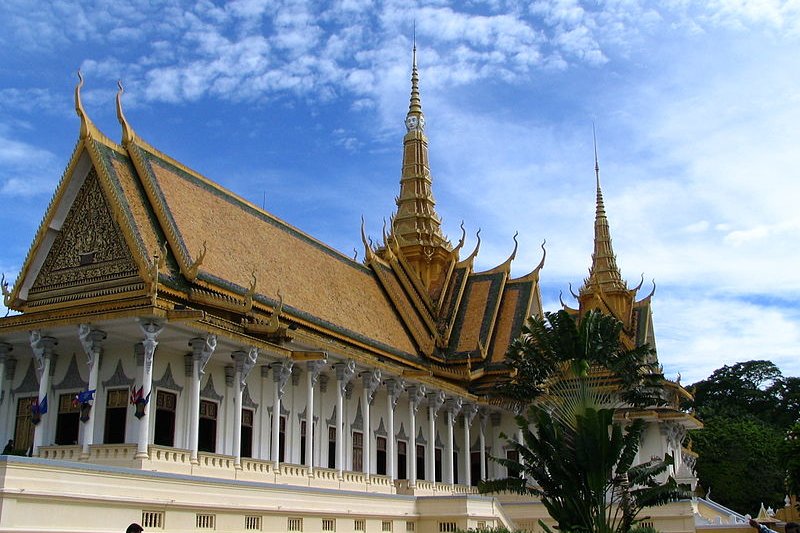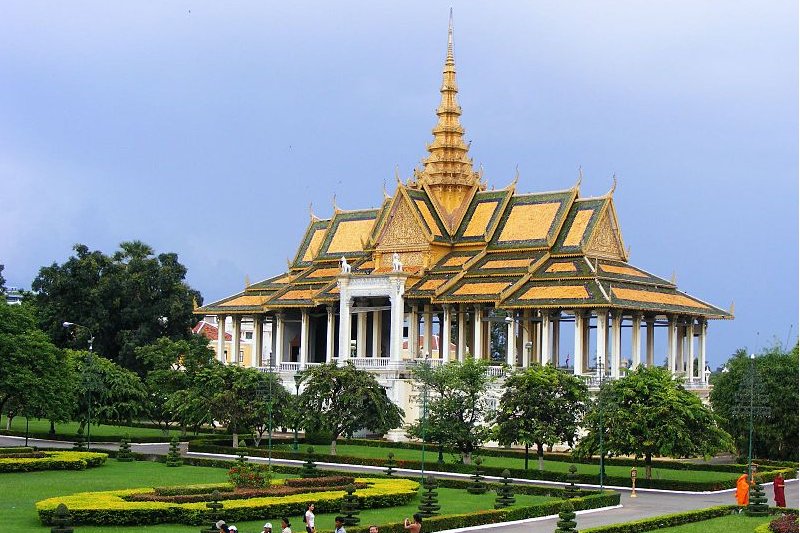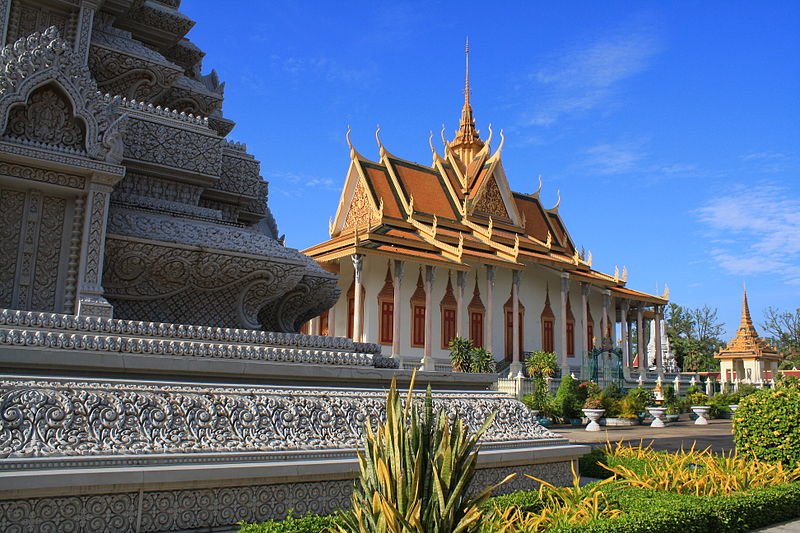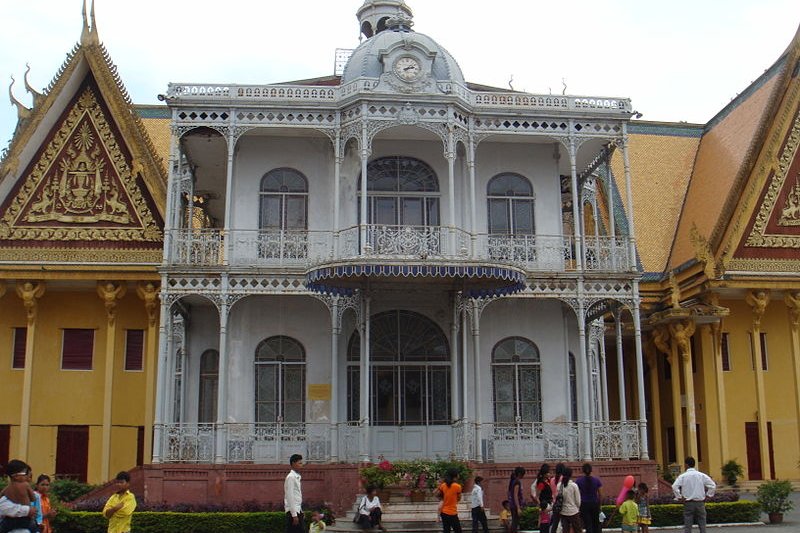 Royal Palace of Cambodia
Royal Palace of CambodiaAuthor: © Atif Gulzar
Source: https://commons.wikimedia.org/wiki/File:Royal_Palace,_Cambodia_2_by_gul791.jpg
The Phnom Penh Royal Palace is one of the biggest attractions of the Cambodian capital. This sprawling complex was built by King Norodom in 1886 and acts as the official residence of Cambodian kings, including the present King Norodom Sihamoni. Although certain quarters of the palace is not open to the public, the rest is. More conspicuous from the outside of the Royal Palace grounds is the Chan Chaya Pavilion, formerly used by Cambodian monarchs to review parades, and for performances of classical Khmer dances.
The Silver Pagoda is so named because the floor is covered with over 5000 silver tiles weighing 1kg each. Its official name is Preah Vihear Preah Keo Morakot but is commonly referred to as Wat Preah Keo. Within this treasured building are many bejewelled statues of the Buddha. Most famous is the 17th century baccarat crystal Buddha, often called the "Emerald Buddha of Cambodia".
 Preah Thineang Chan Chhaya Pavilion, Royal Palace
Preah Thineang Chan Chhaya Pavilion, Royal PalaceSource: https://commons.wikimedia.org/wiki/File:Royal_Palace_complex,_Phnom_Penh.jpg
Author: AJ Oswald

Author: AJ Oswald

It is also known as Wat Preah Keo, or Pagoda of the Emerald Buddha, because there is an "emerald" Buddhat within, which rather than emerald, is presumably made of baccarat crystal. It sits on a gilt pedestal high atop the dais. In front of the dais stands a life-size Buddha made of solid gold and decorated with 9584 diamongs, the largest of which weighs 25 carats.
Dominating the centre of the larger, northern section of the royal compound is the Royal Throne Hall. this was built in 1917 in Khmer style, borrowing extensively from the Bayon temple at Angkor. The walls inside the Throne Hall are painted with murals from the Reamker, the Khmer version of the Ramayana. In addition to coronations, the Throne Hall is used for important constitutional events, and on occasion, for the acceptance of ambassadorial credentials.
 The Silver Pagoda, Royal Palace of Phnom Penh
The Silver Pagoda, Royal Palace of Phnom PenhSource: https://commons.wikimedia.org/wiki/File:Silverpagoda.jpg
Author: plusgood

Author: plusgood

To the right (north-west) of the Throne Hall stands the restricted Royal Residence Compound, while to the left (south) are several structures of interest. These include the Royal Treasury, the Royal Banqueting Hall and the Napoleon III Pavilion. The Napoleon III Pavilion was built in 1866, not in Cambodia, but Egypt. It was originally given by Emperor Nepoleon III to his wife, Empress Eugénie. She stayed there during the opening of the Suez Canal. A year later, Nepolean III had it dismantled and sent the prefabricated folly all the way to Phnom Penh as gift for King Norodom.
 Napoleon Pavilion, a gift of France in 1876, at the Royal Palace of Phnom Penh
Napoleon Pavilion, a gift of France in 1876, at the Royal Palace of Phnom PenhSource: https://commons.wikimedia.org/wiki/File:Napoloen_at_RoyaL_Palace,_Cambodia_Photo.JPG
Author: Engsamnang

Author: Engsamnang

 Latest updates on Penang Travel Tips
Latest updates on Penang Travel Tips
 Map of Roads in Penang
Map of Roads in Penang
Looking for information on Penang? Use this Map of Roads in Penang to zoom in on information about Penang, brought to you road by road.
Copyright © 2003-2025 Timothy Tye. All Rights Reserved.

 Go Back
Go Back